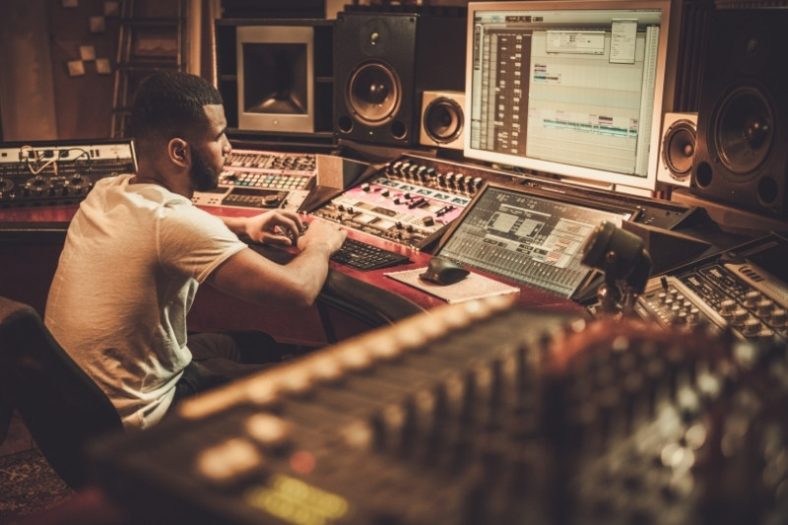How to Make an Audio Plugin (VST, AU, AAX)

To make an audio plugin, you need to have a good understanding of how audio software works, access to a program designed for creating audio plugins, and you need some programming knowledge.
You can make audio plugins using tools such as JUCE, Max/MSP, and SynthEdit.
Using dedicated audio plugin tools like JUCE allows you to create your plugin on one codebase and then export these in various formats, such as VST, VST3, AU, AUv3, RTAS, AAX, which enables them to work on virtually all DAWs across Windows, macOS, Linux, iOS, and Android.
An audio plugin is a software component designed to be added to audio software. In music production, audio plugins are normally added to digital audio workstations (DAWs). Virtual instruments, audio effects, and MIDI effects are some examples of audio plugins.
Making audio plugins is not an essential skill for music production. But if you can do so, you’ll be able to take your understanding of digital audio to the next level, improve your workflow, and avoid most technical issues that get in the way of your music-making process.
Knowing how to code is a must, but some plugin-creation software allows you to design audio plugins without having an in-depth understanding of coding.
Contents
What do you need to know to make an audio plugin?
To make an audio plugin from scratch, you’ll need to have an in-depth understanding of at least one coding language. C++ is considered to be the best programming language for making VSTs due to its available libraries and frameworks. C# is generally seen as a viable alternative.
You’ll also need to learn about how digital audio works. Being extremely familiar with concepts such as ‘amplitude,’ ‘frequency,’ ‘sample rate,’ or ‘bit depth’ is a must. To most audio producers with a good level of experience in the field, this should be the easy part.
Finally, you need to learn about digital signal processing (DSP) and graphical user interface (GUI) programming. This is a big task in itself, but books such as “Digital Signal Processing” by Sanjit K. Mitra and “Understanding Digital Signal Processing” by Richard G. Lyons should be very helpful.
If you’re a music producer with no experience in coding, learning how to make an audio plugin is not something you’ll achieve overnight. If you’re planning on taking the necessary time to learn how to do so, I would recommend that you choose a platform for audio-plugin creation first.
Luckily, there are some top-quality alternatives out there, with varying levels of difficulty.
What are the best tools for making an audio plugin?
JUCE
Using JUCE is not the easiest way to come up with an original audio plugin. However, JUCE can be considered the essential tool for creating all sorts of digital audio software. While JUCE contains a good number of plugin/GUI libraries that should help programmers to improve their workflow, it is fundamentally considered to be an open-source C++ application framework.
Learning JUCE is not easy, but it is highly rewarding – once you master this audio-software creation tool, you’ll be prepared to come up with any piece of audio software you can think of.
Additionally, JUCE is an industry-standard with a high level of compatibility with other plugin-development software, including Max/MSP.
Max/MSP
Max/MSP is a computer environment specifically designed for creating and performing electronic music. A popular software amongst laptop musicians, Max/MSP is considered to be a relatively accessible introduction to making audio plugins. Why? Because Max/MSP was conveniently designed to work as a visual programming language, which means you get to code audio plugins with pre-designed building blocks and access to shared libraries.
Max/MSP was made popular by Max4Live, an extension of the program designed to create audio plugins for the Ableton Live DAW. If you’re an Ableton Live user, there’s a chance you’ve created a song with a Max4Live device or downloaded one of the many free audio plugins in their official library.
What’s the difference between building a Max4Live plugin and creating a VST from scratch?
The obvious difference between the two is that Max4Live plugins can only run in Ableton Live, whereas VST plugins designed using Max/MSP can be added to other DAWs. There’s also a series of limitations associated with Max4Live, which are detailed on the official website of Cycling ’74 (the company responsible for developing Max/MSP).
SynthEdit
Much like Max/MSP, SynthEdit is an audio-plugin creation tool that makes a developer’s job easier by working as a visual programming language. Powered by C++, SynthEdit is not as fashionable or versatile as JUCE and Max/MSP, but it’s a must-have piece of equipment for developers looking to create original virtual synthesizers. While there’s a paid version of the program, the SynthEdit website kindly provides a demo version that “never expires.”
I wouldn’t recommend SynthEdit as the definitive software for making audio plugins. However, I believe it’s an incredibly powerful tool for learning the ins and outs of how synthesizers work.
For a similar piece of software, you can give FL FlowStone (also known as FL SynthMaker) a try.
Where to start?
Making audio plugins is a skill unlike any other in music production. To do so requires an in-depth understanding of how audio software works and what it is used for, and what coding, DSP, and GUI programming are all about. For this reason, making an original audio plugin can be overwhelming for newcomers.
If you dream of making a name for yourself in the world of audio-software development, you should reconcile with the fact it will take a lot of hours, hard work, and dedication. To help you get started, here are some helpful links:
- Learn C++ online with various Skillshare courses.
- Check out Cycling ’74’s amazing list of free Max/MSP tutorials.
- Check out YouTube tutorials—like this one—to learn the ins and outs of how virtual synthesizers work.
- Remember not to snub the importance of GUI programming, a must for all audio plugin developers who are in it for the long run.
Types of audio plugins
Not all audio plugins are made the same, and understanding the differences between the four fundamental types of audio plugins is very important:
Virtual Studio Technology (VST)
The most common type of audio plugin, VST was developed by Steinberg and is currently in its third version (VST3). VSTs can be used with all operating systems, but you may need to download a third-party VST host to use them on Linux. VSTs are compatible with most DAWs, from Ableton Live to FL Studio.
AU (Audio Units)
If you’re making music on an Apple computer, AU is the format to go. Seamlessly adapted to the Mac X OS, this type of audio plugin provides low latency and strong stability and is supported by most DAWs compatible with Mac devices.
AAX (Avid Audio Extension)
AAX comes in two versions: AAX DSP and AAX Native. It’s a format associated with Pro Tools that was initially designed to power the DAW’s 64-bit version. Unless you’re using Pro Tools to make music, you’ll probably not need AAX plugins.
RTAS (Real-Time Audio Suite)
This plugin format was also designed for Pro Tools users. While RTAS is considered to be a less convenient alternative to AAX, most audio engineers would agree there’s no noticeable difference between the two.
Summary
Making an audio plugin is not an essential skill for music production. But if you can do so, you’ll be able to take your understanding of digital audio to the next level, improve your workflow, and avoid most technical issues that get in the way of your music-making process.
If you’re a music producer with no experience in coding, learning how to make an audio plugin is not something you’ll achieve overnight. If you’re planning on taking the necessary time to learn how to do so, I would recommend that you choose a platform for audio-plugin creation first.





